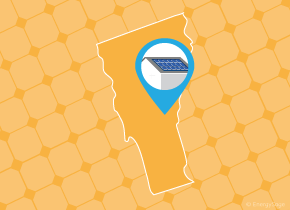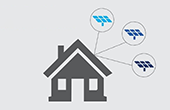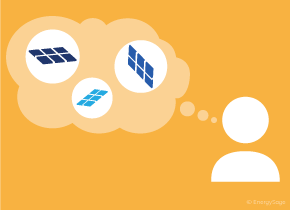History of solar policy in Vermont
Against all odds, Vermont holds its own against the rest of the country’s solar markets: as of the end of 2018, Vermont has installed nearly 300 megawatts (MW) of solar energy capacity, ranking the state 25th on SEIA’s national rankings. Even more impressive has been the steady growth of solar over the last decade alone, led in large part by robust in-state solar policy.
Vermont’s first solar policy, the Local Property Tax Exemption, passed in 1975 to exempt homeowners of the additional property taxes that come with a solar installation, if permitted by their city or town. In 2013, the Uniform Capacity Tax and Exemption for Solar revised the original legislation to fully exempt the property taxes for all solar systems up to and including 10 kilowatts (kW). Another tax break for solar residents followed in 1999, with a Renewable Energy Systems Sales Tax Exemption. With a state sales rate tax of 6 percent, this policy plays a significant role in reducing solar costs.
In 1998, Vermont introduced net metering, which has been crucial for the solar energy industry nationwide by allowing residents to send surplus net energy to the electric grid and receive compensation for it on their energy bill. Net metering in the Green Mountain State has been revised several times, including most recently in 2017. Previously, utilities provided compensation for excess solar generation at the retail rate, rather than the wholesale or avoided-cost rate used in other state net metering programs. Today, Vermont offers a blended residential retail rate, which is typically in the range of the retail rate for electricity.
Additionally, Vermont currently compensates solar owners for the Renewable Energy Credits (REC) representative of the energy produced from a solar energy system. Following the 2017 revision to net metering, utilities compensate homeowners an additional $0.01kWh for 10 years for solar generation.
The last notable change emerging from the 2017 net metering amendment is group net metering, which allows residents to participate in an off-site shared solar installation and still earn credits to reduce their electricity bill. This policy is paramount for the growth of community solar in the state.
Net metering and REC compensation are not the only policies and incentives that have supported the solar industry in Vermont. For instance, in 2003 policymakers enacted the small-scale renewable energy incentive program (SSREIP), which provided substantial rebates to residents for going solar. However, funding for this program officially expired in 2013.
Additionally, Vermont adopted Renewable Energy Rights in 2009: although the policy doesn’t focus on financial incentives, it recognizes solar energy usage as a property right and ensures that proper sunlight is made available to those who operate solar-energy systems.
Aside from the aforementioned policies, the most important policy for the renewable industry in Vermont is the state’s mandatory renewable portfolio standard (RPS), introduced in 2015. Similar to net metering, state energy requirements have been instrumental in the development of clean energy across the nation, as has been the case in Vermont. At first, the Green Mountain state passed the Sustainably Priced Energy Enterprise Development (SPEED) program in 2007, which set a voluntary goal for utilities to supply 20 percent of electricity from renewables by 2017. However, as the SPEED program was set to expire, state legislators penned and passed a mandatory RPS program that now calls for 75 percent from renewables by 2032, easily one of the strongest such policies in the country. While Vermont already generates 11 percent of its electricity from solar energy, solar energy in-state should continue to increase as Vermont works to meet its ambitious renewable target.












